Did you know? According to motorcycle industry experts, improper winter storage is responsible for up to 60% of off-season repair costs. Don’t become a statistic—learn how to winterize a motorcycle properly to protect your investment and ensure safety.
Why Learning How to Winterize a Motorcycle Properly Matters for Winter Storage
As temperatures drop and riding season comes to a close, knowing how to winterize a motorcycle properly becomes a crucial part of motorcycle ownership. Winter storage is not just about parking your bike—it's about protecting one of your most valuable investments. Without proper winterizing, your motorcycle can face issues like corrosion, damaged batteries, gumminess in your fuel system, and even flat spots on the tires. These problems can lead to expensive repairs and affect the overall performance and safety of your bike when spring arrives.
Understanding the stakes helps you avoid becoming part of the alarming statistic: up to 60% of off-season repairs are preventable with correct winterize a motorcycle methods. The best approach is proactive maintenance—by the time snow starts to fall, your motorcycle should already be in good condition and ready for winter storage. A properly winterized bike emerges in the spring rolls ready to ride, keeping unexpected costs and hassles at bay.
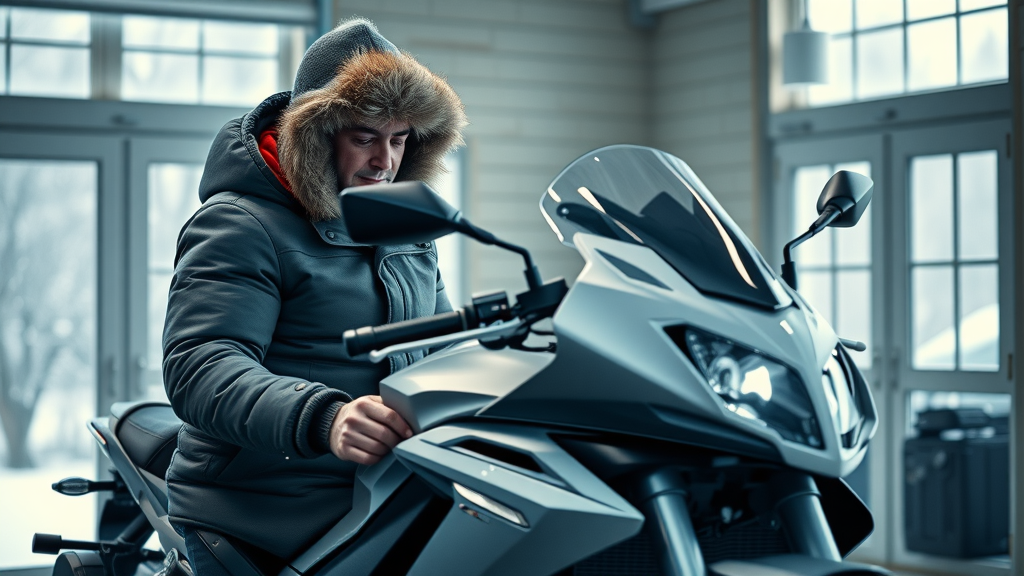
-
Reduce costly repairs
-
Keep your bike in good condition for spring
-
Maintain safety and performance
Unlock the Essentials: How to Winterize a Motorcycle Properly
Winterizing your motorcycle is a comprehensive process that extends far beyond simply storing your bike indoors. This step-by-step guide breaks down every critical component—from cleaning all surfaces, servicing the engine, to the right ways to store your bike in your home garage or a storage unit. With a clear winterizing roadmap, you’ll increase your motorcycle’s chances of staying in optimal condition year after year.
One essential step is evaluating where to store your motorcycle over the winter months. The decision between a traditional home garage and a secure storage unit can make a substantial difference in the preservation of your bike. A proper motorcycle cover tailored to your environment is another crucial element, protecting your bike against the cold, moisture, and dust. Additionally, learning the must-dos for your gas tank , oil and filter ensures the mechanical integrity of your ride—even after months of inactivity.
-
Step-by-step winterizing your motorcycle guide
-
Choosing between home garage and storage unit
-
Special motorcycle cover choices
-
Must-dos for your gas tank, oil, and filter
Prepare Your Bike: Inspecting for Good Condition Before Winterizing
The first step in learning how to winterize a motorcycle properly is a thorough inspection to ensure your bike is in good condition . Start by examining the entire bike for signs of wear, corrosion, or damage. Look closely at your tires, brakes, cables, and any small mechanical components. Found an oil stain or cracked cable? Addressing these before storage prevents minor issues from turning into major repairs during the winter months.
Properly winterizing your motorcycle in good condition means less hassle when spring rolls around. If your bike is already at its best, the winterizing process preserves what’s working well and protects against further deterioration. Simply put, it’s always a good idea to fix problems now rather than discover them when it’s time for your first spring ride.
-
Check for existing wear or damage
-
Why winterize your bike in good condition
Winterize a Motorcycle Step 1: Clean and Protect All Surfaces
Before storing, thoroughly wash and dry your motorcycle—even if it looks clean. Road grime, driveway dust, and bug residue can all hasten corrosion during winter storage. Use gentle automotive soap, rinse thoroughly, and make sure no water is left in tight spaces like around the exhaust pipes and behind covers. Allowing the motorcycle to dry fully eliminates hidden moisture that might lead to rust.
Once dry, apply a quality wax to protect painted and chrome surfaces, functioning as a barrier against oxidation. Pay special attention as you lubricate moving parts such as the chain and cables—these are more prone to seizing after months without movement. Take extra care around the exhaust pipe and exhaust pipes : Use dedicated metal polish and avoid getting wax or oil inside.
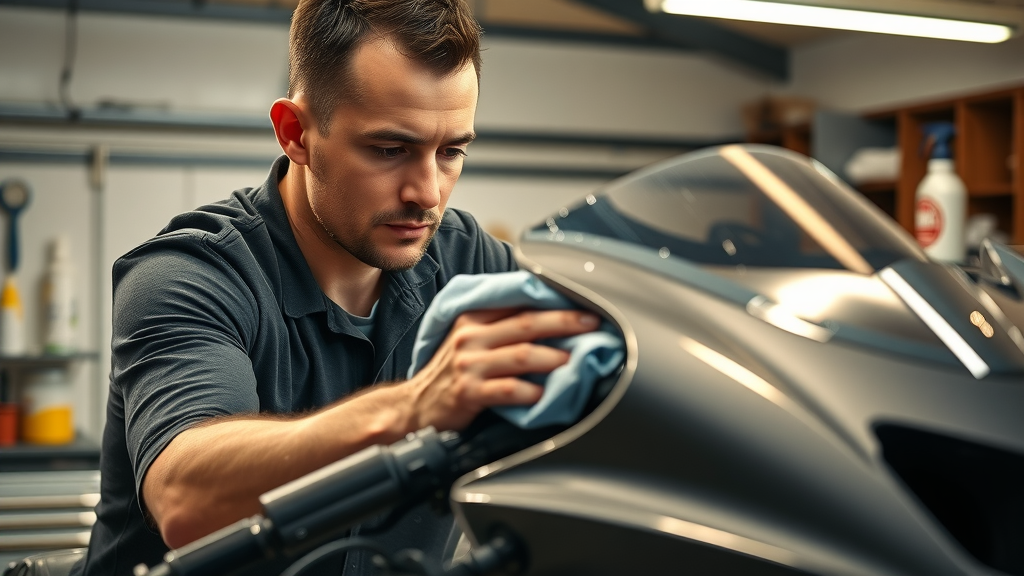
-
Wash and fully dry your bike
-
Apply wax and lubricate moving parts
-
Special care around exhaust pipe and exhaust pipes
"A clean bike is less likely to corrode – think of it as armor for your motorcycle against winter."
Winterize Your Motorcycle: Battery Maintenance Essentials
The battery is one of the most sensitive and expensive components to replace, so proper maintenance is a must in winterizing your motorcycle. Remove the battery if your storage location isn’t heated or if you expect long periods of freezing temperatures. Store it in a dry area—ideally at room temperature—using a battery tender or trickle charger to maintain its charge. Never store a discharged battery, as it can freeze and become irreparably damaged.
If you leave the battery in the bike, disconnect the negative terminal and use a maintenance charger to keep it in good condition throughout the winter months. Remember, batteries lose charge slowly even when off. Neglecting this step is a common mistake, often resulting in frustration and unnecessary expense when spring arrives.
-
Remove or maintain motorcycle battery
-
Trickle charger and safe storage tips
Gas Tank and Fuel Stabilizer: Protect Your Motorcycle in Winter Storage
Moisture and stale fuel are two serious enemies of a gas tank and your bike’s fuel system during winter storage. The best practice is to fill the gas tank completely, leaving minimal air to prevent condensation and rust from forming inside. Next, add a high-quality fuel stabilizer designed specifically for motorcycle engines. Run the engine briefly to circulate the stabilizer through the entire fuel system—carburetor or fuel injection parts included.
Ignoring fuel stabilization often leads to gum, varnish buildup, and hard starting after winter months, and can even force you to seek costly additional service just to get your bike running again. Always remember, a fuel stabilizer keeps fuel fresh and helps preserve the entire fuel system throughout extended non-use periods.
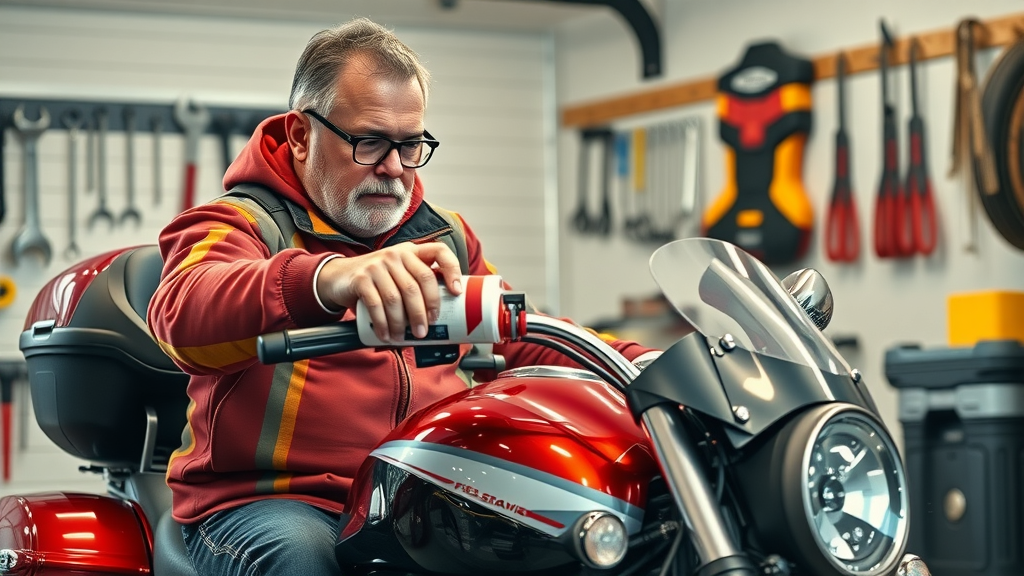
-
Fill gas tank to avoid condensation
-
Add fuel stabilizer and run engine briefly
-
Impact on fuel system longevity
Change the Oil and Filter: Key to Effective Motorcycle Winter Storage
Old oil becomes acidic after months of use and contains contaminants that can corrode vital engine parts during long storage. That’s why it’s essential to change the oil and filter before storing your bike. Drain the old oil completely, replace the oil filter (a good idea for complete protection), and refill with fresh, manufacturer-recommended oil.
A fresh oil change acts as a layer of protection throughout the winter months, minimizing engine wear and making sure your ride is in good condition when spring rolls around. Don’t forget to dispose of used oil and the old filter responsibly, following all local environmental guidelines.
-
Drain and replace old oil and filter
-
Protects engine and keeps it in good condition
Exhaust Pipe Protection: Prevent Rust and Pests
The exhaust pipe and exhaust pipes are often overlooked in winterizing your motorcycle, yet they’re prime entry points for moisture and small animals seeking warmth. Moisture can corrode pipes from the inside out, while pests may enter and create nests, causing costly blockages or damage.
Prevent this by plugging exhaust pipe openings. Use exhaust-specific plugs or insert steel wool—never use a plastic bag, as it may degrade and clog the system. Mark the plugs with a visible flag or tag so you remember to remove them in spring. This simple precaution can save you from unpleasant—and costly—surprises when riding season returns.
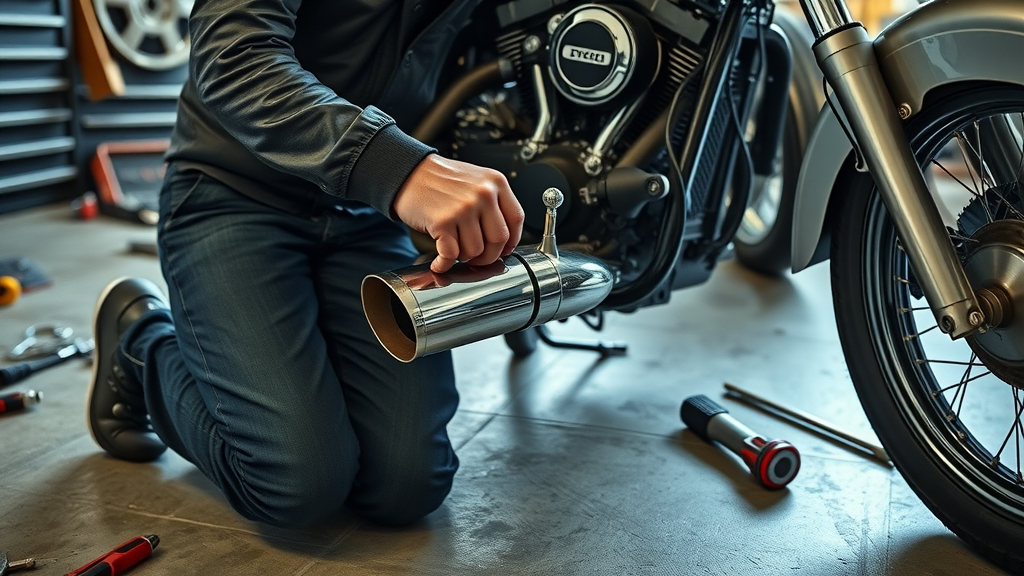
-
Cover exhaust pipe openings
-
Use exhaust-specific plugs or steel wool for exhaust pipes
The Importance of a Motorcycle Cover: Winterize Your Motorcycle Against the Elements
A high-quality motorcycle cover is one of the simplest ways to guard your bike against winter’s harshest elements. Indoor covers are typically lighter and focus on breathability, preventing condensation inside while keeping dust away. Outdoor covers, on the other hand, must be both waterproof and breathable—shielding your bike from precipitation without trapping moisture underneath.
It’s a good idea to invest in a cover that matches your storage situation—whether you’re winterizing your motorcycle in the home garage, storage unit, or outside. Covers crafted from multi-layer materials offer the best year-round protection, reducing the risk of corrosion, paint fading, and seat damage.
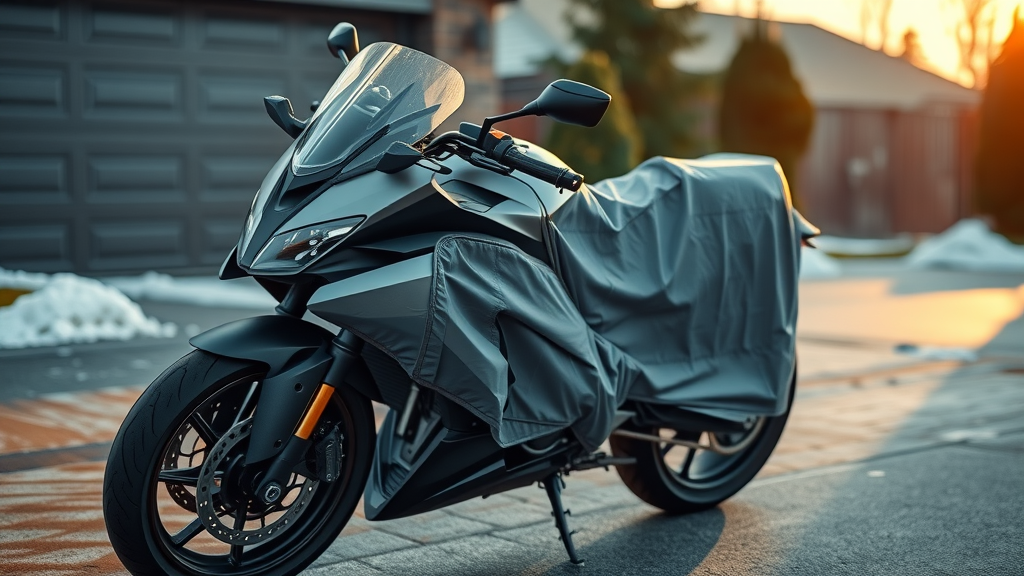
-
Choose between indoor/outdoor covers
-
Benefits of breathable yet waterproof material
"A proper motorcycle cover is your first defense against winter’s moisture, dust, and UV damage."
Storage Unit vs Home Garage: Where to Store and Winterize a Motorcycle Properly
Deciding between your home garage and a storage unit is an important step in learning how to winterize a motorcycle properly . The home garage offers convenience, giving you quick access for periodic checks and maintenance. However, its lack of climate control can expose your motorcycle to fluctuating temperatures and humidity—sometimes leading to condensation and corrosion, especially in unheated spaces.
A storage unit , especially one with climate control, provides superior protection from theft, temperature swings, and moisture. This higher security level comes with increased costs and typically limited accessibility compared to your home garage. Your choice should balance these factors: security, environmental conditions, convenience, and budget.
|
Storage Option |
Security Level |
Climate Control |
Cost |
|---|---|---|---|
|
Home Garage |
Medium |
No |
Low |
|
Storage Unit |
High |
Optional |
Varied |
-
Pros and cons for each option
-
Accessibility vs safety
Motorcycle Insurance: Coverage Considerations During Winter Storage
Reviewing your motorcycle insurance policy is a step too many riders overlook. Even when storing your bike for the winter, theft, fire, or accidental damage remain risks. Some policies allow you to lower your premium during off-season storage by suspending coverage for collision risks while retaining comprehensive protection for fire and theft.
Before you winterize your motorcycle properly, talk to your insurance provider about the best options for your needs. Adjusting your policy could be a good idea to save money while maintaining essential protection—especially if you’re storing your motorcycle in a storage unit or less secure location.
-
Needs for theft, fire, and storage incidents
-
Should you adjust your policy for winter?
Lubricate and Tend to Moving Parts: Ensuring Good Condition Post-Winter
Keeping your drivetrain and controls in good condition during winter months requires careful attention. Before storage, clean and lubricate all moving parts: chain, throttle, clutch cables, and foot levers. Use a dedicated spray lubricant on the chain and a light oil for cables and pivot points. This prevents corrosion, reduces internal friction, and helps ensure your motorcycle is ready to ride immediately come spring.
If your bike sits for extended periods without movement, unlubricated parts can become stiff, sticky, or even seize. Keeping everything well-tended makes your spring maintenance easy and protects both performance and safety after removing your motorcycle cover when spring arrives.
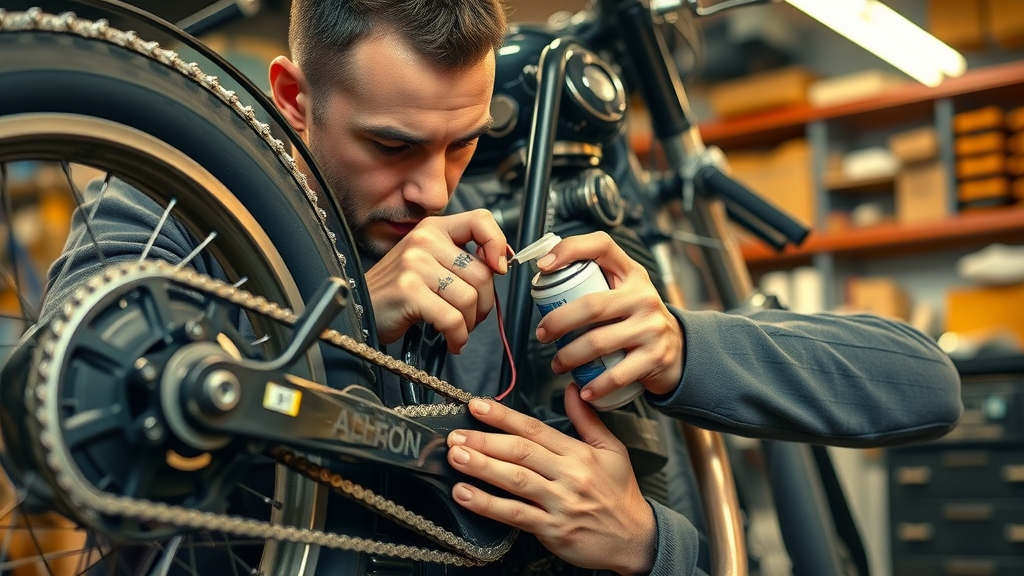
-
Treating cables, chain, and controls
-
Long-term impact on your motorcycle
Tire Care and Positioning: Preventing Flat Spots as You Winterize a Motorcycle
Tires are highly susceptible to flat spots during long winter storage—especially in climates where the ground is cold and hard. Inflate your tires to the manufacturer’s recommended maximum, but avoid over-inflation. If possible, use center or paddock stands to take pressure off tires completely. No stands? Roll the bike slightly every few weeks to distribute the load and prevent permanent deformation.
Regularly caring for your tires while winterizing your motorcycle is a good idea that protects against unexpected replacement costs and ensures safe handling as soon as the riding season returns.
-
Best practices for tire inflation
-
Using stands versus rotation
Coolant and Brake Fluid Checks: Protecting Internal Components During Motorcycle Winterization
If your motorcycle is liquid-cooled, check that the coolant is fresh and rated to withstand your region’s lowest winter temperatures. Changing coolant is an added service that only takes a few minutes but could save you from cracked engine parts after a cold snap. For air-cooled engines, this step can be skipped, but for many modern bikes with radiators, it’s a critical safeguard.
Similarly, inspect and top up brake fluid levels. Moisture in brake lines can cause corrosion or degrade performance after months of storage, compromising rider safety when it’s time to remove your motorcycle cover and hit the road.
-
Antifreeze check for liquid-cooled motorcycles
-
Brake fluid top-up and inspection
Final Checklist: How to Winterize a Motorcycle Properly Every Year
Create a personalized checklist based on all the above steps. Having a go-to list ensures you never forget a crucial detail and helps you repeat the process efficiently every winter.
-
Comprehensive point-by-point list covering all sections
"Prepare in fall and ride worry-free in spring — winterize your bike to invest in peace of mind."
People Also Ask: What Should I Do to Winterize My Motorcycle?
-
Step-by-step highlights for winterizing your motorcycle: inspection, cleaning, battery prep, gas tank maintenance, lubrication, tire care, covering, and storage location.
People Also Ask: Should I Leave Gas in My Motorcycle Over the Winter?
-
Fill tank and use fuel stabilizer to prevent corrosion, rust, and condensation issues in winter storage. Never store with a nearly empty tank.
People Also Ask: How to Properly Store a Motorcycle in the Winter?
-
Store in a dry, secure area using a motorcycle cover, with fluids topped off, battery on maintenance, and exhaust pipes protected. A climate-controlled storage unit is ideal.
People Also Ask: Do I Need to Run My Motorcycle Periodically When Stored for Winter?
-
It’s generally not necessary if winterized correctly. If you run the engine, warm up fully to remove condensation and recharge the battery.
Frequently Asked Questions About How to Winterize a Motorcycle Properly
-
Is it okay to leave my motorcycle outside during winter?
While it’s possible to leave your motorcycle outside with a high-quality, waterproof motorcycle cover, indoor storage in a garage or storage unit provides much better protection against the elements and reduces theft risk. -
What common mistakes to avoid when winterizing your bike?
Common mistakes include skipping the oil and filter change, not using fuel stabilizer, failing to protect the exhaust pipe, neglecting battery maintenance, or using a non-breathable cover—all of which can lead to costly repairs in spring. -
How long does the entire winterization process take?
Most riders can winterize a motorcycle in two to three hours, but allowing time for the bike to dry after washing or for fluids to circulate after adding fuel stabilizer can extend this slightly. Start early to avoid rushing and missing steps.
Protect Your Investment: Take Action to Winterize Your Motorcycle Properly
-
Don’t wait until the weather turns—start the winterizing your motorcycle process today to keep it in good condition year-round.
-
Review your insurance policy, choose a strong motorcycle cover, and follow this checklist for winter storage success.
-
Share this guide with fellow riders and help the community stay safe—and ready to ride next season!
Summary and Next Steps for Keeping Your Motorcycle in Good Condition All Winter Long
-
Quick overview of key winterization steps
-
Encourage regular off-season maintenance checks
-
Emphasize benefits for reliability, safety, and springtime readiness
Video Demonstrations: How to Winterize a Motorcycle Properly from Start to Finish
Watch: Comprehensive video guide—professional mechanic demonstrates a full motorcycle winterization process, including cleaning, lubrication, storage preparation, and battery care. High-quality close-ups and step-by-step narration are provided for clarity and confidence in your own winter preparations.
-
Watch a hands-on application of fuel stabilizer, running the bike, and sealing the gas tank for winter safety.
Protecting the Exhaust Pipe and Pipes: Video Walkthrough
-
Video tutorial demonstrating exhaust protection techniques specific to winterizing your motorcycle.
Call to Action
Take the time now to winterize a motorcycle properly—protect your ride, your investment, and your springtime adventures. Share this guide to help every rider keep their motorcycle in good condition all year round!
To ensure your motorcycle remains in optimal condition during the winter months, it’s essential to follow a comprehensive winterization process. The article “How to Winterize a Motorcycle Properly for Winter Safety” provides a detailed guide on this topic.
For additional insights, consider the following resources:
-
“How to Winterize a Motorcycle” by American Family Insurance offers an 11-step guide covering aspects like cleaning, fluid replacement, and battery maintenance. ( amfam.com )
-
“How to Winterize a Motorcycle” by Men’s Journal provides expert advice on preparing your bike for winter storage, including tips on fuel stabilization and proper storage techniques. ( mensjournal.com )
These resources offer valuable information to complement the steps outlined in the main article, ensuring your motorcycle is well-protected during the off-season.
 Add Row
Add Row  Add
Add 
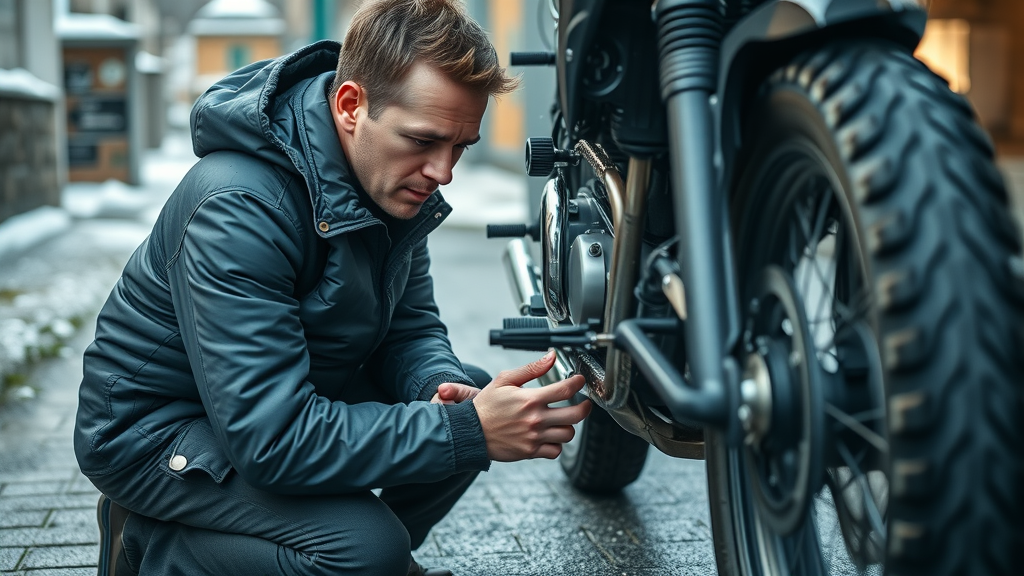
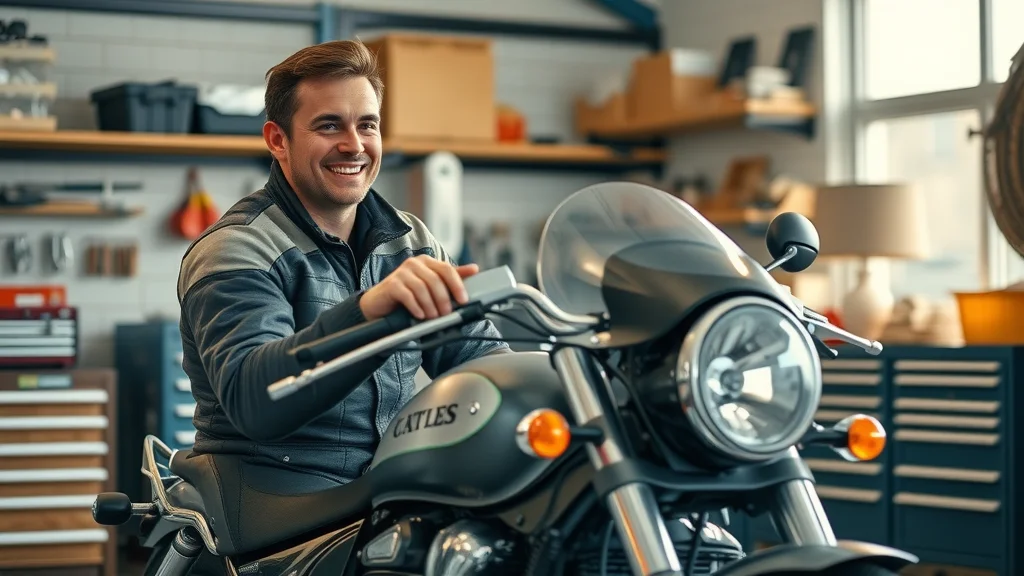
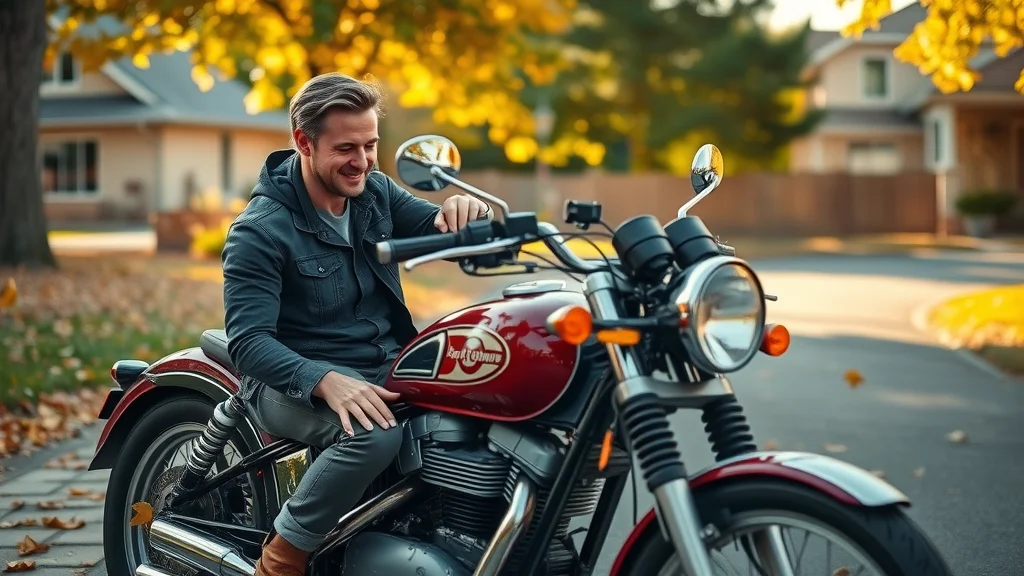
Write A Comment